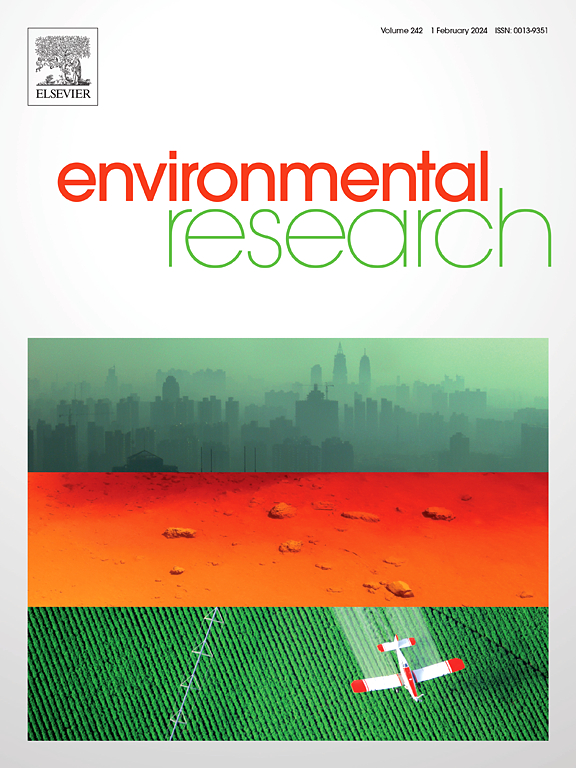Spatial heterogeneous associations and spillover effects of ozone pollution in China
IF 7.7
2区 环境科学与生态学
Q1 ENVIRONMENTAL SCIENCES
引用次数: 0
Abstract
Surface ozone pollution has become a major environmental concern in China. Understanding its spatial associations at both intra-stratum and inter-strata levels is essential for effective pollution control. However, research on spatial stratified heterogeneity and spillover effects of ozone pollution remains limited. This study applies a hybrid model integrating random forest, SHapley Additive exPlanations, and geographically weighted regression to investigate the spatial heterogeneity and spillover effects of ozone pollution. Principal component analysis and geographically and temporally weighted regression were further used to assess local environmental drivers of ozone spillover. The results indicate a fluctuating upward trend in ozone concentrations with enhanced spatial clustering. Intra-stratum associations in South, Central, and East China and inter-strata associations in Northeast and North China exhibited strengthening trends. Ozone spillover levels were highest in North China, with a slight decline, followed by Northwest and Northeast China, where spillover decreased more markedly. In contrast, Southwest, East, South, and Central China—regions with previously low spillover levels—showed a fluctuating increase. Industrial structure was the primary driver of ozone spillover across all regions and years; regions historically dominated by the secondary sector experienced spillover reduction following structural adjustments. Technology expenditure mitigated ozone spillover in North China but intensified it in Southwest China. The effects of relative humidity, ventilation coefficient, and mean sea level pressure on ozone spillover emerged in Central and Eastern China.
中国臭氧污染的空间异质性关联与溢出效应
地表臭氧污染已成为中国主要的环境问题。了解其在层内和层间的空间关联对于有效控制污染至关重要。然而,对臭氧污染的空间分层异质性和溢出效应的研究仍然有限。本文采用随机森林、SHapley加性解释和地理加权回归相结合的混合模型,研究了臭氧污染的空间异质性和外溢效应。采用主成分分析、地理和时间加权回归等方法对臭氧外溢的局部环境驱动因素进行了评价。结果表明,随着空间聚类的增强,臭氧浓度呈波动上升趋势。华南、华中、华东地区层内联系和东北、华北地区层间联系呈增强趋势。臭氧溢出水平在华北地区最高,略有下降,其次是西北和东北地区,其溢出水平下降更为明显。相比之下,中国西南、东部、南部和中部地区——此前外溢水平较低的地区——则呈现波动增长。产业结构是臭氧溢出的主要驱动因素;历史上以第二产业为主的地区在结构调整后,外溢效应有所减少。技术支出减缓了华北地区的臭氧溢出效应,但加剧了西南地区的臭氧溢出效应。相对湿度、通风系数和平均海平面压力对中国中东部地区臭氧外溢的影响较为明显。
本文章由计算机程序翻译,如有差异,请以英文原文为准。
求助全文
约1分钟内获得全文
求助全文
来源期刊

Environmental Research
环境科学-公共卫生、环境卫生与职业卫生
CiteScore
12.60
自引率
8.40%
发文量
2480
审稿时长
4.7 months
期刊介绍:
The Environmental Research journal presents a broad range of interdisciplinary research, focused on addressing worldwide environmental concerns and featuring innovative findings. Our publication strives to explore relevant anthropogenic issues across various environmental sectors, showcasing practical applications in real-life settings.
 求助内容:
求助内容: 应助结果提醒方式:
应助结果提醒方式:


